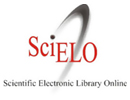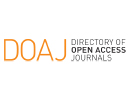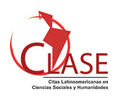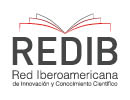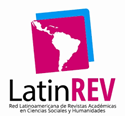Collective heritage in times of social distancing. A netnography of the limeño jarana
DOI:
https://doi.org/10.21142/DES-1702-2025-0027Keywords:
Intangible heritage, virtual ethnography, heritage digitalization, criollo music, virtual heritageAbstract
This study explores the interaction of intangible cultural heritage (ICH) with the virtual space during the Covid-19 pandemic, focusing on the traditional criollo peña Don Porfirio (Peru). The confinement shifted ICH practices to cyberspace, prompting a netnography and participant observation to analyze the digital and in-person dynamics of ICH. Through live streaming, comments, and social media content, efforts were made to recreate the traditional atmosphere of the peña, achieving only a partial interpretation due to the limitations of virtuality and asynchronous interactions. Cyberspace served as temporary refuge and emergency support, revealing an emerging sense of belonging among frequent participants. However, virtuality could not replace the participatory and material context of ICH, which is essential for its continuity as an element of identity and social cohesion. The study reflects on the need to adapt research methodologies to the digital realm.
Downloads
References
Adams, K. M., Choe, J., Mostafanezhad, M. y Phi, G. T. (2021). (Post-) pandemic tourism resiliency: Southeast Asian lives and livelihoods in limbo. Tourism Geographies, 23(4), 915-936. https://doi.org/10.1080/14616688.2021.1916584
Alberca-Sialer, F. (2021). Caracterización del turismo patrimonial. Cultura, 35, 197-208. https://doi.org/10.24265/cultura.2021.v35.12
Angulo, A. (2019). La difusión de la música alternativa en la comunidad virtual. (1.ª ed.). Universidad Andina Simón Bolívar.
Bellas, L. (2021). «Que no pare la fiesta». Estrategias de gestión del patrimonio inmaterial en Cataluña en tiempos de COVID-19. En X. Roigé Ventura y A. Canals Ossul (eds.), Patrimonio confinados. Retos del patrimonio inmaterial ante el COVID-19 (pp. 93-103). Universidad de Barcelona. https://books.google.com.pe/books?hl=es&lr=&id=H7peEAAAQBAJ&oi=fnd&pg=PA93&dq=+patrimonio+inmaterial+intangible+Covid+&ots=G5cnsznYCl&sig=MhAv-D7pBN5oFQ5ZH7FLGep1KBE#v=onepage&q=patrimonio%20inmaterial%20intangible%20Covid&f=false
Bonder Grimberg, I. (2014). Netnografía: aplicación de técnicas etnográficas en la web 2.0. IV Encuentro Latinoamericano de Metodología de Las Ciencias Sociales. http://www.memoria.fahce.unlp.edu.ar/trab_eventos/ev.8203/ev.8203.pdf
Borras, G. (2012). Lima, el vals y la canción criolla (1900-1936). Institut Français d’Études Andines.
Buenrostro, C. (2023). El Reto al Tepozteco: una tradición ancestral frente al covid-19. Alteridades, 33(66), 85-97. https://doi.org/10.24275/LOCF1441
Burnes, B. y Choi, H. (2021). Hybrid economy in the digital age: The case of the independent music community in Korea. Technology in Society, 65, 101582. https://doi.org/10.1016/j.techsoc.2021.101582
Bustamante, E. (2007). Apropiaciones y usos de la canción criolla (1900-1939). Contratexto. Revista de la Facultad de Comunicación de la Universidad de Lima, 15, 165-188. https://doi.org/10.26439/contratexto2007.n015.779
Carrera Vergara, E. (1954). La Lima criolla de 1900. S. e.
Chocano, R. (2012). ¿Habrá jarana en el cielo? Tradición y cambio en la marinera limeña. Ministerio de Cultura del Perú.
Creswell, J. W. (2014). Investigação qualitativa e projeto de pesquisa: escolhendo entre cinco abordagens. (1.ª ed.). Penso.
Denzin, N. y Lincoln, Y. (2012). Introducción general. La investigación cualitativa como disciplina y como práctica. En N. Denzin e Y. Lincoln (eds.), El campo de la investiagción cualitativa (1.ª ed.) (pp. 43-102). Gedisa.
Fernández-Bringas, T. y Bardales-Mendoza, O. (2022). La experiencia de la investigación cualitativa. Fondo Editorial Cayetano.
Flórez Aquino, V. y Falcón Portugal, J. (1954). Historia de la marinera. Edición del autor.
Gamarra, A. (1899). Rasgos de pluma. S. e.
Ginzarly, M. y Jordan Srour, F. (2022). Cultural heritage through the lens of COVID-19. Poetics, 92, 101622. https://doi.org/10.1016/j.poetic.2021.101622
Gondim, C. B., Bolzán, R. E., Espínola, R. S. y Alexandre, M. L. de O. (2020). Netnografia como método de pesquisa em turismo. Revista Turismo Em Análise, 31(1), 19-36. https://doi.org/10.11606/issn.1984-4867.v31i1p19-36
Hernán-García, M., Lineros-González, C. y Ruiz-Azarola, A. (2021). How to adapt qualitative research to confinement contexts. Gaceta Sanitaria, 35(3), 298-301. https://doi.org/10.1016/j.gaceta.2020.06.007
Hine, C. (2004). Etnografía virtual. UOC.
Jenkins, H., Ford, S. y Green, J. (2015). Cultura transmedia. La creación de contenido y valor en una cultura en red. Gedisa.
Katz, E. y Liebes, T. (2010). «No more peace!» How disaster, terror and war have upstaged media events. En N. Couldry, A. Hepp y F. Krotz (eds.), Media events in a Global Age. Routledge.
Kozinets, R. (2015). Netnography: Redefined. (2.ª ed.). SAGE. https://books.google.com.pe/books?id=d-JtBgAAQBAJ&printsec=frontcover&dq=kozinets&hl=es-419&sa=X&redir_esc=y#v=onepage&q=kozinets&f=false
Kozinets, R. y Nocker, M. (2018). Netnography: Engaging with the challenges. En A. Bryman y D. Buchanan (eds.), Unconventional methodology in organization and management research (pp. 127-146). Oxford University Press.
Kozinets, R. V. (2002). The field behind the screen: Using netnography for marketing research in online communities. Journal of Marketing Research, 39(1), 61-72. https://doi.org/10.1509/jmkr.39.1.61.18935
Lenzerini, F. (2011). Intangible cultural heritage: The living culture of peoples. European Journal of International Law, 22(1), 101-120. https://doi.org/10.1093/ejil/chr006
Llórens, J. A. (1983). Música popular en Lima: Criollos y andinos. Instituto de Estudios Peruanos. https://repositorio.iep.org.pe/items/20875e68-517f-4186-8a50-d58d2502e2d0
Mathews, D. (2016). La ciudad cantada (Lima, Santiago, Buenos Aires). Centro de Desarrollo Étnico (CEDET).
Ninan, J. (2020). Online naturalistic inquiry in project management research: Directions for research. Project Leadership and Society, 1(September), 100002. https://doi.org/10.1016/j.plas.2020.100002
Organización de las Naciones Unidas para la Educación la Ciencia y la Cultura (Unesco). (2003). Convención para la Salvaguardia del Patrimonio Cultural Inmaterial. https://unesdoc.unesco.org/ark:/48223/pf0000132540_spa
Organización de las Naciones Unidas para la Educación la Ciencia y la Cultura (Unesco). (2020). El patrimonio vivo y la pandemia de Covid-19. Panorama de la encuesta en línea de la UNESCO. https://ich.unesco.org/doc/src/8GA-snapshot_on_survey_living_heritage_pandemia-ES.pdf
Paul, I., Mohanty, S. y Sengupta, R. (2022). The role of social virtual world in increasing psychological resilience during the on-going COVID-19 pandemic. Computers in Human Behavior, 127, 107036. https://doi.org/10.1016/j.chb.2021.107036
Peruzzini, M., Cavallaro, S., Grandi, F., Martinelli, E. y De Canio, F. (2023). Exploring how to use virtual tours to create an interactive customer remote experience. Journal of Industrial Information Integration, 35. https://doi.org/10.1016/j.jii.2023.100509
Pink, S., Horst, H., Postill, J., Hjorth, L., Lewis, T. y Tacchi, J. (2016). Etnografía digital. Principios y práctica. Morata.
Rohner, F. (2013). Centros musicales de Lima y Callao. Prácticas sociales y musicales «criollas» en la Lima contemporánea. El caso de La Catedral del Criollismo en el contexto de los centros musicales y peñas limeños. En C. Aguirre y A. Panfichi (eds.), Lima, siglo XX. Cultura, socialización y cambio (pp. 267-296). Fondo Editorial de la Pontificia Universidad Católica del Perú.
Rohner, F. y Contreras, M. (2020). La música criolla peruana underground: entre la localidad y la translocalidad. Contrapulso, 2, 35-48. https://contrapulso.uahurtado.cl/index.php/cp/article/view/22
Roigé, X., Arrieta‐Urtizberea, I. y Seguí, J. (2021). The sustainability of intangible heritage in the covid‐19 era—resilience, reinvention and challenges in Spain. Sustainability (Switzerland), 13(11), 5796. https://doi.org/10.3390/su13115796
Roigé, X., Bellas, L. y Soulier, V. (17 de enero de 2022). El Museo Virtual de las Fiestas del Fuego del Pirineo. Un museo en línea a partir del patrimonio inmaterial. I Congreso Internacional de Museos y Estrategias Digitales. https://doi.org/10.4995/cimed21.2021.12673
Roigé, X., Del Mármol, C. del y Guil, M. (2019). Los usos del patrimonio inmaterial en la promoción del turismo. El caso del Pirineo catalán. PASOS. Revista de Turismo y Patrimonio Cultural, 17(6), 1113-1126. https://doi.org/10.25145/j.pasos.2019.17.077
Rothenbuhler, E. (2010). From media events to ritual to communicative form. En N. Couldry, A. Hepp y F. Krotz (eds.), Media events in a Global Age. Routledge.
Sánchez, W. C. y Ortiz, P. A. (2017). La netnografía, un modelo etnográfico en la era digital. Espacios, 38(13), 28-42. https://www.researchgate.net/publication/315493726_La_netnografia_un_modelo_etnografico_en_la_era_digital
Siles, I. (2005). Internet, virtualidad y comunidad. Revista de Ciencias Sociales, II(108), 55-69. http://www.redalyc.org/articulo.oa?id=15310805
Tuikka, A.-M., Nguyen, C. y Kimppa, K. K. (2017). Ethical questions related to using netnography as research method. The ORBIT Journal, 1(2), 1-11. https://doi.org/10.29297/orbit.v1i2.50
Turpo, W. O. (2008). La netnografía: un método de investigación en Internet. EDUCAR, 42, 81-93. http://www.redalyc.org/articulo.oa?id=342130831006
Waldron, J. L. y Veblen, K. K. (2008). The medium is the message: cyberspace, community, and music learning in the Irish traditional music virtual community. Journal of Music, Technology and Education, 1(2+3), 99-111. https://intellectdiscover.com/content/journals/10.1386/jmte.1.2and3.99_1
Weijo, H., Hietanen, J. y Mattila, P. (2014). New insights into online consumption communities and netnography. Journal of Business Research, 67(10), 2072-2078. https://doi.org/10.1016/j.jbusres.2014.04.015
Wenjing, X. (2005). Virtual space, real identity: Exploring cultural identity of Chinese Diaspora in virtual community. Telematics and Informatics, 22(4), 395-404. https://doi.org/10.1016/j.tele.2004.11.006
Xiao, J. y Stanyer, J. (2017). Culture, boundary, and identity: a comparison of practices between two online punk communities in China. Chinese Journal of Communication, 10(3), 246-263. https://doi.org/10.1080/17544750.2016.1207695
Downloads
Published
Issue
Section
License

Esta obra está bajo una licencia http://creativecommons.org/licenses/by-nc-sa/4.0/




